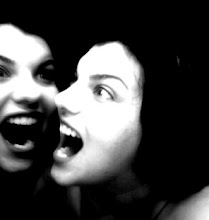Common Name: Red Cherry Shrimp (RCS)
Origin: Taiwan and southern China (original wild strain; red morph believed to have been created in Japan)
Size: females up to 3 cm (1.2 in.)
Water Parameters: 6.5 to 7.5 pH (sometimes higher)
Temperature: Best housed at 65*F to 80*F
Feeding: Micro-things in the aquarium, algae, frozen bloodworms, blanched (par-boiled) vegetables (such as peas, zucchini, etc.), dead fish and shrimp, decaying plant matter
Larval Development: Suppressed; No larval stage; Eggs hatch to miniature adults
Behavior: Non-aggressive
Difficulty: Easy
Quick History
Red cherry red shrimp (RCS) are a color morph of Neocaridina heteropoda (wild). The country of origin of this color morph is debatable, but one thing is for certain: it was created by shrimp
Water Parameters
These shrimp are perfect for the beginner shrimp
Breeding
RCS are prolific breeders (comparable to guppies). Simply add male and female RCS, clean water, proper water parameters, and wait for the eggs to hatch. Females will display a yellow or green "saddle" (named this because it looks like she has an English saddle on her back when her ovaries are carrying unfertilized eggs. When she molts, she also releases hormones and pheromones into the water. This will send all males in the aquarium into a breeding frenzy, and the males will swim vigorously in their search to find the freshly-molted female. The lucky male will flip her over on her back and mate with her. If copulation is successful, the eggs leave the ovaries (the saddle will disappear), and she will carry the fertilized eggs in her swimmerets (legs under her tail) for about 30 to 45 days (shrimp
Housing
RCS are not too picky about their surroundings. They can be kept in planted tanks (which is my preference), bare bottom tanks, and even clown puke tanks (which I do not recommend). Ten gallon aquariums are highly recommended for the novice shrimp
Feeding
RCS are not picky eaters. They will gladly eat just about anything, but a stable, healthy diet is always preferred. Vegetable such as blanched (parboiled) zucchini, spinach, peas, algae growing in the aquarium, nori wraps (used for making Sushi rolls, and the stuff sold for feeding saltwater fish--same stuff BTW, but the nori sold in the grocery stores is cheaper and you get more for your money), and even cleaned strawberries. They will also eat frozen foods like bloodworms. Dried spirulina flakes and flake fish food can be fed. They will also eat decaying plant matter, decaying fish, and decaying shrimp. Live foods can also be cultured. RCS do not have to be fed every day, especially if their tank is "aged". The more aged the tank is, the more micro-things there are in the tank for them to eat.
Sexing and Coloration
RCS are easy to sex. One of the first obvious differences is that the female has a saddle on her back. Males do not have a saddle for obvious reasons. Females are usually slightly larger than the male, and she also has a larger tail than the male so she can carry eggs. Males are smaller and have a thinner and shorter tail than the female. Females are red and can display different color intensities. They will be more red due to genetics and also based on how comfortable they are. Good water parameters make for colorful, happy shrimp. Males will display less red than females.


No comments:
Post a Comment